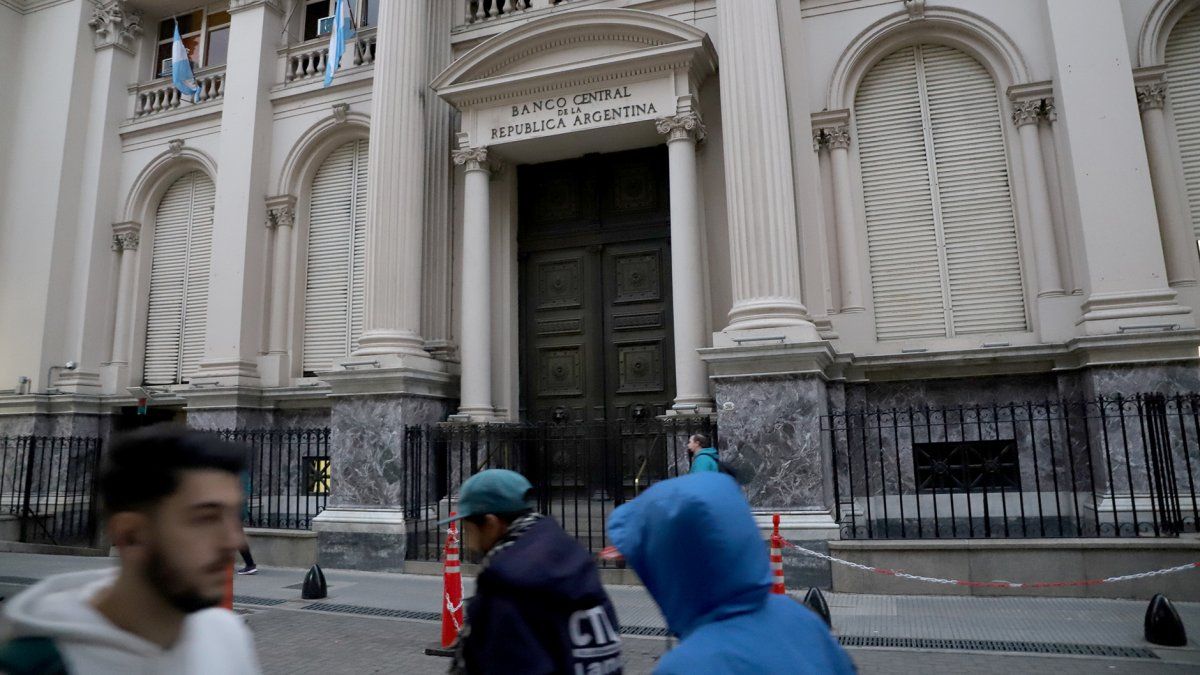The question of the deadlines for opening the stocks exchange rate is at the center of the economic agenda after the first period of the Government of Javier Milei. He International Monetary Fund struggles to speed up timeswhile local officials give ambiguous signals.
For example, the Minister of Economy, Luis Caputo, seeks to appease anxieties, emphasizes that they still do not have sufficient reserves to do so and places expectations around the negotiation for greater indebtedness with the country itself. IMF. The President, meanwhile, says that today the last major obstacle is to clear up the problem of “puts”, a kind of latent debt of the Central Bank. It’s about a stock of $19 billion of public securities held by banks that have liquidity insurance from the BCRA and that presents some considerable challenges for their dismantling.
BCRA Puts: Government began talks with banks
The hypothesis that this is the last great obstacle to removing change control is questioned by numerous economists and operators. In any case, it is clear that it constitutes a latent threat to the official plans to end the monetary issue and, for this reason, the Government wants to find a way out of the put problem. Thus, as the Bloomberg agency reported and was able to confirm Ambit, he BCRA began talks with the main banks and the chambers of the sector in search of alternatives.
According to estimates of the consultant 1816, There is a current stock of puts that covers a volume of Treasury securities of around $19 trillion. Of that total, the vast majority are “American” style putsthat is, they have put options to the BCRA that can be executed at any time: $16.5 billion, according to the calculations of 1816. They are the ones that most worry the economic team since in the event of a change in market mood the banks can exercise them massively from one day to the next and force the Central Bank to issue pesos to buy back the securities. The smallest portion corresponds to the so-called “European” style puts, which can only be executed one month before the maturity of the insured bonds.
Although Milei pointed out at Expo EFI that puts are a “perversion” that the previous Government applied and the IMF endorsed, The truth is that they are a tool that was used extensively during the last stretch of Alberto Fernández’s management but also during the first months of his own management. They were part of the initial strategy to stimulate the migration of debt from the BCRA to the Treasury, which was later modified by other incentives, as this medium reported. In order for banks to agree to dismantle part of their holdings of overnight repos and lend to the Treasury for longer terms, the Central Bank offered them insurance that can be executed at any time.
image.png
What is the drawback? When banks want to get rid of the Treasury securities they have insured for whatever reason, the monetary authority is contractually committed to buying them from them. For it, must issue pesos, something that goes against the monetary squeeze that the Executive seeks to sustain. In fact, these operations are accounted for by the IMF within the monetary financing goal. The agency’s officials focused their attention on the put problem and demanded their liquidation. Milei points out that they are the equivalent of 4 points of GDP that could put pressure on the dollar in a scenario of lifted stocks.
Insurance for banks: what are the challenges
Details of the mechanism that will be used to dismantle these liquidity insurance remain to be defined. As these are written contracts, the Government requires banks to agree to divest all insured securities. A banking sector source told Ambit that considers it feasible to carry out some type of voluntary exchange or repurchase of the Treasury with subsequent offering of attractive securities, as long as it is carried out under market conditions. But he raises the question: “You have to see what they specifically offer.”
In that train, in addition to the magnitude of the stock, One of the complications is given by the term of the insured securities.. According to estimates from 1816, Half of all current puts expire in 2026 and 2027, mostly due to the inflation-linked bonds TZX26 and TZX27, placed by the current management. “Banks today are willing to have sovereign securities in such long pesos because they have them covered with puts, but if they did not have these liquidity options they would probably prefer to have a lower duration in their portfolios,” said the consulting firm.
So, An alternative for the Executive would be to exchange them for short securities without BCRA insurance, such as LECAP (short-term fixed rate bills). The problem is that, with this alternative, would overload Treasury maturities in the coming months, which already swelled in recent times as a result of the migration of debt from the Central to the treasury. The amount at stake of securities with puts for 2026 and 2027 amounts to $8.1 trillion, which is equivalent to half of the monetary base and 35% of private fixed terms in pesos, according to 1816.
The Ministry of Economy knows about this trade off. In fact, in their last debt tender in pesos they decided to allocate the entire amount placed in a LECAP to September (a month that until then had a lower load of maturities) to avoid a greater concentration in July and August.
Banks put another point on the balance when evaluating the possibility of getting rid of securities with puts. It is one thing if the economic team wants to reduce the stock of passes one day from the BCRA and another is if they leave at least a portion, which allows them to combine unsecured Treasury securities with very short-term Central instruments in their assets, the sources explain.
On the other hand, bonds backed by puts do not count towards the regulatory limits of exposure to public sector financing that financial entities have. For this reason, in 1816 they maintained that, to dismantle the stock of liquidity insurance, it would be necessary to reform the rule so that banks keep the pesos in Treasury instruments. In any case, it is something that has already been done to favor the dismantling of the BCRA’s remunerated liabilities by exempting from said exposure limits the LECAPs integrated with balances from the repos.
Dollar: the great obstacle for the stocks?
The truth is that there are different voices in the market that contradict Milei’s idea that the put problem is the last obstacle to remove before getting out of the trap. On the one hand, because the Minister of Economy recognizes that reserves are still far from the necessary level to move towards a smooth opening. On the other hand, because the debt handrail from the BCRA to the Treasury transfers the risk of pressure on the dollar (in a scenario without restrictions) to the biweekly Economy tenders in which the maturities must be renewed.
Furthermore, as this media pointed out, the banking sector itself indicates that “the key is through the deposits”which are the opposite of both the repos and the LECAP and the bonds with puts, and which are the ones that eventually “could run to the dollar.”
Consulting firm 1816 also raised this point: “In our opinion, Puts are not an obvious impediment to lifting exchange controlsin the sense that depositors (who are the true demanders of pesos) might want to dollarize their portfolios regardless of whether banks have their bonds covered or not covered with puts.”
Source: Ambito



